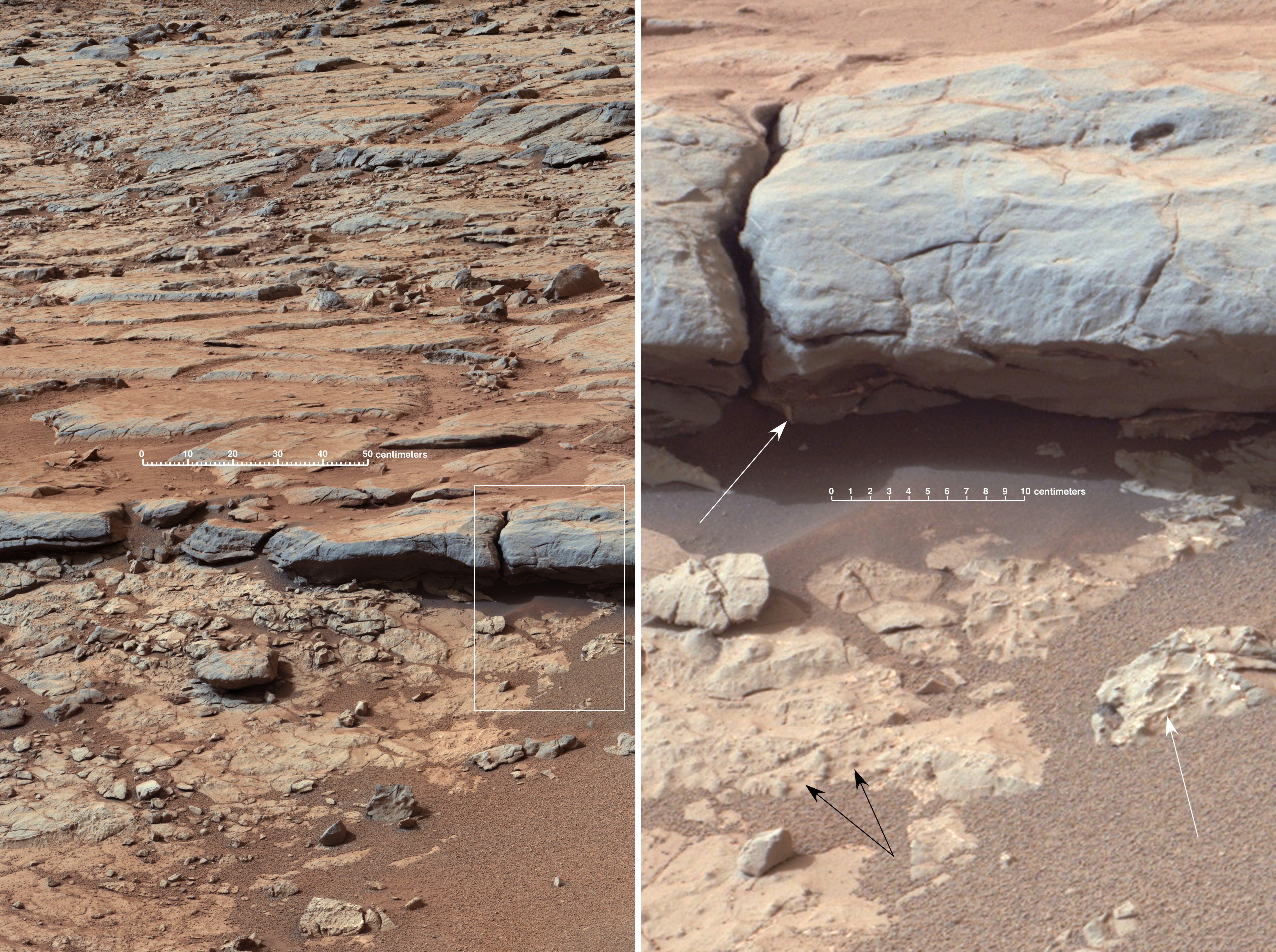
NASA has searched for signs of life on Mars for years, but for the first time ever, the agency’s rover Curiosity has taken a crucial measure of an ingredient necessary for life as we know it in the Red Planet’s rocks: Organic carbon.
And the results are in: Mars’ rocks might have enough organic carbon for life to form.
Curiosity rover is pottering around a particular region of Mars called Yellowknife Bay, which is in the Gale Crater. In a series of images, the rover has captured myriad photographs of the Bay’s rocky surface, piecing together views of Mars that reveal how much change the Red Planet has undergone. Some 3.5 billion years ago, the Crater was a lake. At the same, time, the first single-celled organisms were emerging in Earth’s own waters.

What’s new — Curiosity hasn’t just been taking pretty pictures, however. In a new paper, researchers at NASA reveal Curiosity drilled rocks in the Bay and tested mudstone samples using its Sample Analysis at Mars system. This mini-laboratory aboard the rover gradually heated the rock up to 1600 degrees Fahrenheit — as hot as magma — to break down any organic carbon bonds in the rock.
When SAM added oxygen to the mix, it joined with the newly-released carbon to form carbon dioxide, a molecule that the instruments could measure to determine how much organic carbon was present in the rock.
The results, released on Monday, June 27 in PNAS, show Mars’ rocks harbor at least 200 parts per million of organic carbon — more than some low-life areas of Earth, such as the Atacama Desert in Chile, says Jennifer Stern, lead author of the study, in a NASA press release. Stern is a scientist at NASA’s Goddard Space Flight Center.
“Basically, this location would have offered a habitable environment for life, if it ever was present,” Stern says.
Why it matters — Every life form that we know of is built from organic carbon, or carbon atoms bonded to hydrogen atoms. These compounds are what we’re made of, what we eat, and how we function. Not just any carbon compound qualifies as organic — carbon dioxide and some carbonates are inorganic, for example, since their carbon isn’t bound to hydrogen.

Living creatures don’t have a monopoly on organic compounds, though, which is why we can’t assume that organic carbon in Martian rocks means there was once life on Mars. These compounds can also be made by volcanic eruptions and surface reactions, or have been brought to Mars on a meteor, like the one that formed Gale Crater over 3.5 billion years ago. These sources are more likely to be the origin of the organic carbon in Yellowknife Bay than living creatures, Stern explains to NASA.
But these new findings help paint a more detailed picture of the resources that would have been available to form and sustain life long ago — if it existed.
Digging into the details — Interestingly, the Yellowknife Bay mudstone contains even more organic carbon than had previously been detected in Mars meteorites that have landed on Earth.

This is because the meteorites, which were ejected from Mars and landed on Earth, are a different kind of rock than the mudstone sampled in this study. Back when the Bay held liquid water, very fine sediment containing organic carbon settled on the floor of the crater and formed this rock that could only be measured by a rover on the surface.
What’s next — Curiosity collected these mudstone samples back in 2014, two years after it landed in Gale Crater. Scientists have spent the last eight years making sense of the data and putting it in context with these other findings.
The trusty rover has traveled about 17 miles inside the crater since it took these samples. Its other discoveries have highlighted features of the crater that would have been helpful or even essential for life to form, like low acidity and the presence of elements like oxygen, nitrogen, and sulfur.
In time, the Perseverance rover will continue where Curiosity leaves off: This rover is set to collect samples of Martian rocks and stow them away for a sample return mission to Earth. By bringing the rocks back to our labs here, scientists may be able to glean more important clues to life — past or present — on the Red Planet. Unfortunately, we will need to wait till at the earliest 2033 till these samples arrive on Earth. Let’s hope it doesn’t take another eight years to analyze these precious pieces of Mars.







